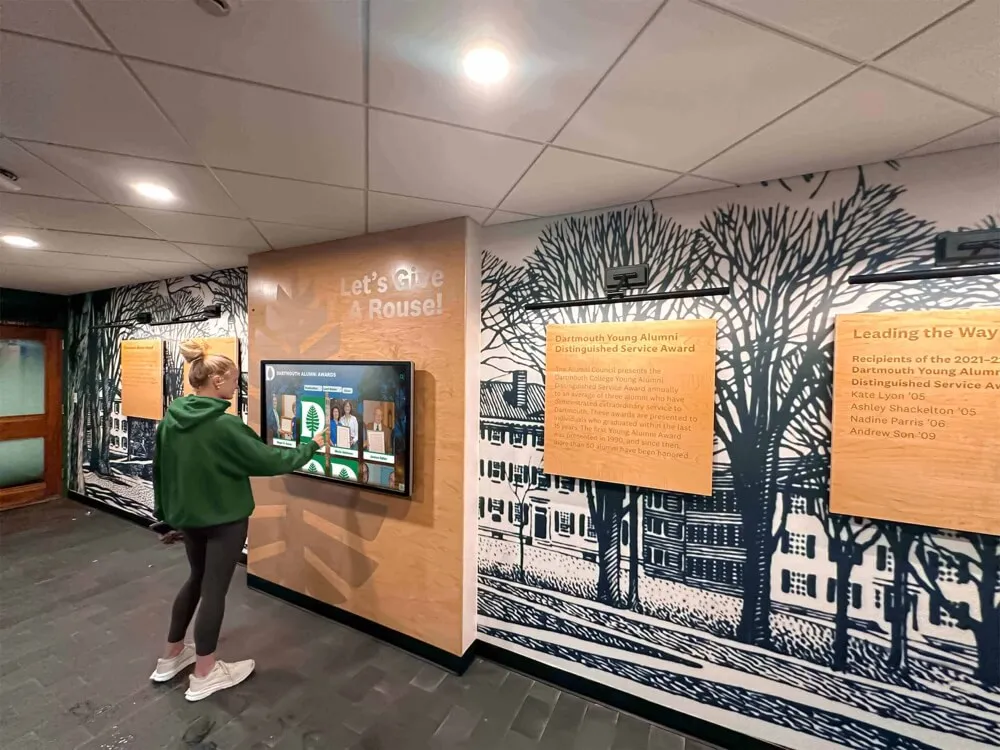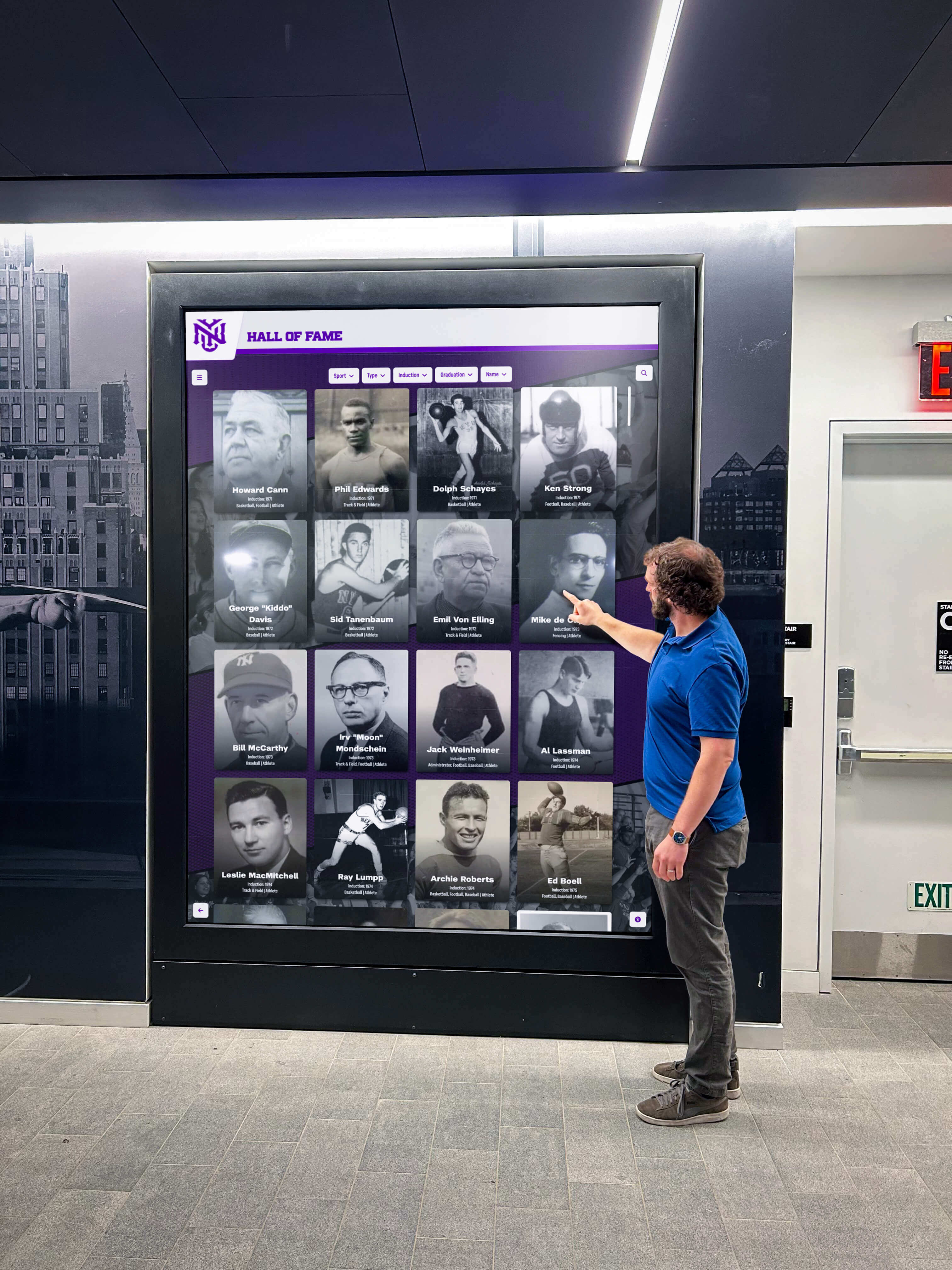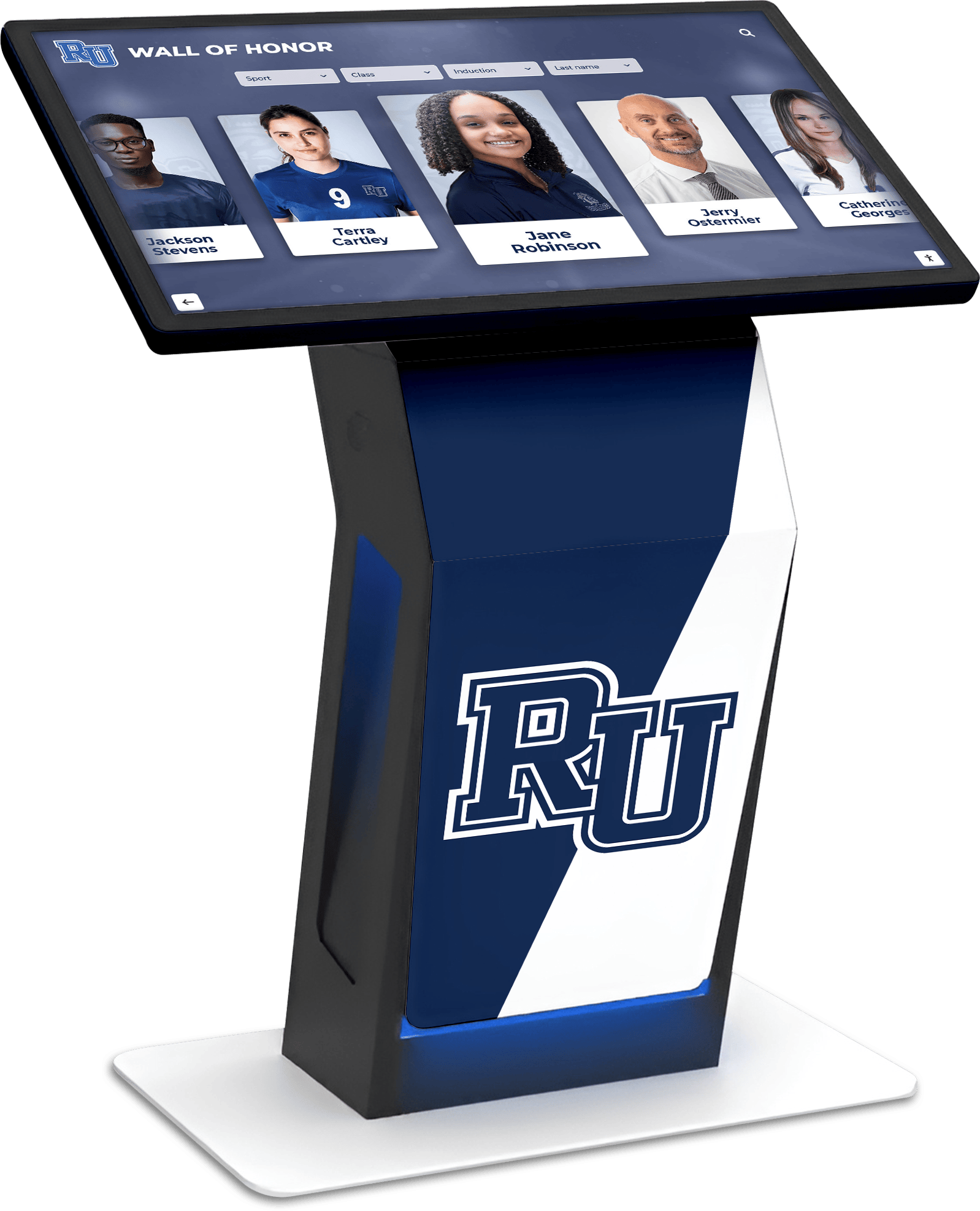
College Tour Directory Touchscreen Display: Complete Guide to Interactive Campus Navigation in 2025
First impressions fundamentally shape enrollment decisions. Prospective students and families visiting college campuses form lasting opinions during those critical few hours exploring facilities, meeting faculty, and envisioning their future academic home. Yet many institutions struggle with campus wayfinding—confused visitors wandering between buildings, tour groups arriving late to presentations, families missing key facilities, and stressed admissions staff fielding constant navigation questions. Interactive touchscreen directory displays transform these chaotic experiences into seamless journeys that showcase institutional strengths while demonstrating the technological sophistication and visitor-focused culture that today's students expect. This comprehensive guide explores how colleges and universities can leverage touchscreen directory technology to enhance campus tours, improve visitor experiences, streamline operations, and ultimately strengthen enrollment outcomes through better first impressions. Understanding the Impact of Campus Wayfinding on Enrollment Before exploring specific technology solutions and implementation strategies, understanding how wayfinding quality influences enrollment decisions helps justify investment and inform planning approaches that maximize return on wayfinding infrastructure.
Read More
Assisted Living Visitor Digital Displays: Complete Guide to Interactive Kiosks for Senior Care Facilities
Senior living facilities face unique challenges in managing visitors while maintaining security, providing wayfinding assistance, and creating welcoming environments for families and guests. Assisted living visitor digital displays offer comprehensive solutions that streamline check-in processes, enhance facility navigation, improve communication, and strengthen security—all while accommodating the specific needs of aging populations. This complete guide explores how interactive kiosks and digital displays transform visitor experiences in assisted living, memory care, independent living, and continuing care retirement communities. Understanding Assisted Living Visitor Digital Displays The senior living industry has experienced significant technology adoption in recent years, with research showing that 80% of senior housing professionals increased their technology budgets to address challenges including visitor management, communication, and resident engagement. Digital displays have emerged as central components of these technology implementations, serving as interactive hubs for multiple facility functions.
Read More
Library Touchscreen: Complete Guide to Interactive Displays for Modern Libraries
Libraries are transforming patron experiences through interactive touchscreen technology that makes information discovery intuitive, wayfinding effortless, and services accessible 24/7. From catalog search kiosks enabling patrons to locate books instantly to interactive displays showcasing community programs and digital collections, library touchscreens represent essential infrastructure for modern libraries adapting to digital-first patron expectations. This comprehensive guide explores how touchscreen technology enhances library services, improves patron engagement, and creates self-service capabilities that empower visitors while reducing staff workload for routine inquiries. Understanding Library Touchscreen Technology Library touchscreen systems encompass diverse applications tailored to the unique needs of public, academic, and specialized libraries serving varied patron populations.
Read More
High School Touchscreen for Admissions Tours: Complete Guide to Interactive Campus Experience Technology 2025
First impressions shape enrollment decisions. When prospective students and families arrive for admissions tours, the experiences they encounter during those critical first hours on campus profoundly influence whether your school becomes their top choice or just another option in a competitive field. Traditional paper brochures and staff-led presentations, while valuable, no longer meet the expectations of digitally-native families who expect interactive, personalized experiences across all aspects of their lives—including the high-stakes process of selecting the right educational environment for their children. High school touchscreen technology transforms admissions tours from passive information sessions into engaging, interactive experiences that showcase your institution’s commitment to innovation while providing comprehensive information that addresses every family’s unique questions and concerns. From interactive wayfinding helping families navigate sprawling campuses independently to digital recognition displays demonstrating student achievement culture, touchscreen solutions create memorable impressions that differentiate your school in an increasingly competitive enrollment landscape.
Read More
Campus Directory Systems: Complete Guide to Interactive Digital Solutions 2025
Navigating large educational campuses remains one of the most challenging experiences for new students, visiting parents, prospective families, and campus guests. Traditional paper campus maps, static building directories, and hand-drawn directions quickly become outdated and fail to provide the intuitive, personalized wayfinding modern campus visitors expect. Interactive campus directory systems with touchscreen interfaces solve these navigation challenges while enhancing campus aesthetics, improving visitor experiences, and reducing staff burden from constant directional inquiries. This comprehensive guide explores how campus directory technology transforms wayfinding, what features drive effective navigation, and how to implement systems that confidently guide visitors across even the most complex educational environments. Understanding Interactive Campus Directory Systems Campus directory systems have evolved from simple paper maps distributed at welcome centers to sophisticated digital wayfinding solutions that actively guide students, faculty, staff, and visitors through complex educational environments.
Read More
Building Directory Systems: Complete Guide to Touchscreen Wayfinding Solutions 2025
Navigating complex buildings remains one of the most frustrating experiences for visitors, patients, students, and employees alike. Traditional paper directories and static wall maps quickly become outdated and fail to provide the intuitive, personalized wayfinding modern building occupants expect. Interactive building directory systems with touchscreen interfaces solve these navigation challenges while enhancing building aesthetics, improving visitor experiences, and reducing staff burden from constant directional inquiries. This comprehensive guide explores how building directory technology transforms wayfinding, what features drive effective navigation, and how to implement systems that guide visitors confidently to their destinations. Understanding Interactive Building Directory Systems Building directory systems have evolved from simple printed listings to sophisticated digital wayfinding solutions that actively guide visitors through complex environments.
Read More
Touchscreen Building Directory: Complete Guide to Modern Wayfinding Solutions
Modern buildings face an increasing challenge: helping visitors, employees, and guests navigate complex multi-floor facilities efficiently while creating positive first impressions. Touchscreen building directories represent a transformative solution that combines intuitive wayfinding, real-time information updates, and engaging interactive experiences. This comprehensive guide explores how organizations can implement effective touchscreen directory systems that enhance navigation, reduce reception desk burden, and modernize building environments. Whether you're managing a corporate office, educational campus, healthcare facility, or mixed-use complex, understanding the capabilities and best practices for digital building directories will help you make informed decisions that improve the visitor experience while showcasing your organization's commitment to innovation. Why Modern Buildings Need Interactive Touchscreen Directories Traditional building directories—static boards with removable letters, printed floor plans, or simple wall-mounted lists—no longer meet the expectations of visitors accustomed to digital navigation in every other aspect of their lives. As buildings grow more complex with frequent tenant changes, department relocations, and expanded services, maintaining accurate static signage becomes an operational burden that often results in outdated, confusing information.
Read More
Touchboard Sign: Complete Guide to Interactive Digital Signage Solutions for Schools and Organizations
The modern touchboard sign represents a revolutionary shift in how organizations communicate, engage visitors, and display information. Unlike traditional static signage, these interactive digital displays combine touchscreen technology with dynamic content management to create engaging, informative experiences. Whether you're looking to enhance wayfinding in a large campus, showcase achievements in a school, or create interactive donor recognition displays, touchboard signs offer versatile solutions that meet diverse communication needs. This comprehensive guide explores everything you need to know about selecting, implementing, and maximizing the impact of touchboard signs in 2025 and beyond. What is a Touchboard Sign? A touchboard sign is an interactive digital display that combines touchscreen technology with content management software to deliver dynamic, engaging information to users. Unlike traditional printed signs or basic digital screens, touchboard signs allow visitors to actively interact with content, search for specific information, navigate through multiple layers of data, and access multimedia presentations.
Read More
Touchscreen Directory for Hospital: Complete Guide to Interactive Wayfinding and Patient Engagement
Modern healthcare facilities face a unique challenge: creating intuitive navigation experiences for patients, visitors, and staff navigating complex buildings during stressful moments. Touchscreen directories for hospitals represent a transformative solution, combining interactive wayfinding, real-time information updates, and patient-centered design to improve the healthcare experience from the moment someone enters the building. This comprehensive guide explores how hospitals can implement effective touchscreen directory systems that enhance navigation, reduce staff burden, and improve overall patient satisfaction. Why Hospitals Need Interactive Touchscreen Directories Healthcare facilities are among the most complex buildings to navigate. Large hospital campuses often feature multiple wings, numerous departments, confusing floor numbering systems, and frequent renovations that change layouts. Patients and visitors arrive during anxious, emotionally charged moments when clear navigation is essential yet difficult to maintain.
Read More






























